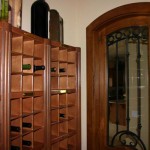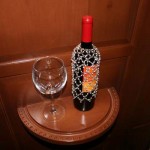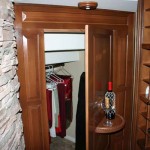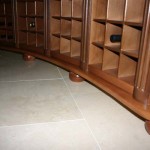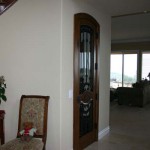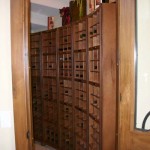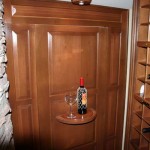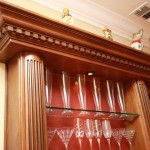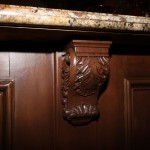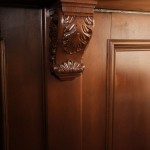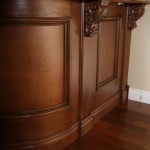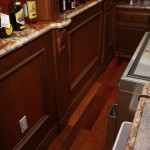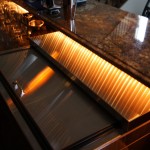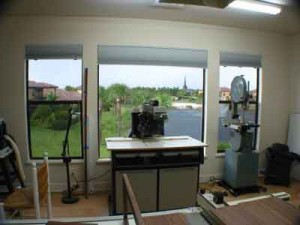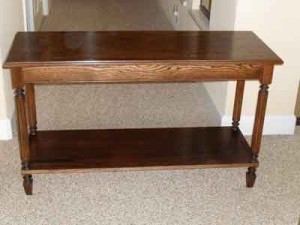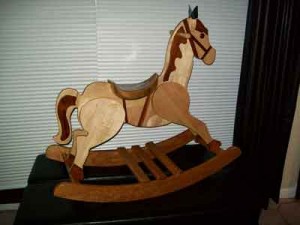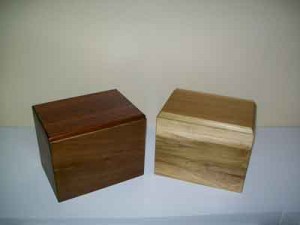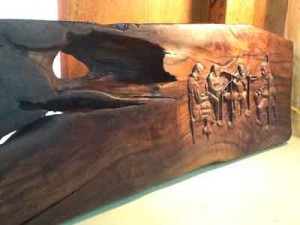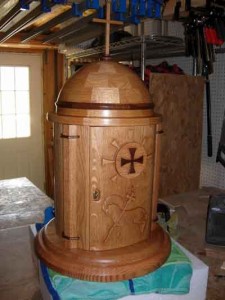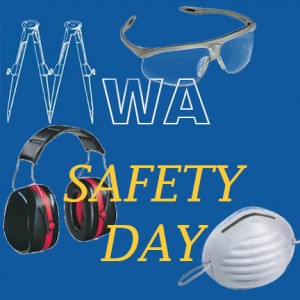 Woodworkers Safety Day is TODAY, May 17th!
Woodworkers Safety Day is TODAY, May 17th!
This commemorative day in woodworking history was started as Woodworking Safety Week, by The Wood Whisperer, Marc Spagnuolo back in 2008. Since then it has been trimmed down to just Woodworking Safety Day and is now sponsored by the folks over at Modern Woodworker’s Association, spearheaded by Tom Iovino of Tom’s Workbench.
So take some time today to read through the last years worth of safety tips that have been featured in our monthly publication Wood News Online. Hopefully these tips will inspire you to practice woodworking safety, not just today, but every day of your woodworking ventures.
Let us know if you have any of your own safety tips by leaving a comment!
1) Tablesaw Safety: Unplug the machine whenever you are making blade adjustments or changes. -Tom Moran
2) Fire Extinguisher Placement: Have a good fire extinguisher at the point furthest from the exit so if a fire starts between you and the exit you can damp it down and get past it to safety. -Roger Webb
3) Long Sleeves: Not too many years ago, a neighboring school had a student’s arm get sucked into a radial arm saw, while the student was wearing a hoodie with long sleeves. The sleeve got caught in the blade. The arm was cut-off just below the elbow (instructor was only 5′ from the student). Any rotating equipment should have a NO LONG SLEEVE safety rule. -Dale Dunlevy
4) Rehearsing the Cut: Before you do any operation in the shop, rehearse it. Think about what you are going to do. Put your hands in the position you will use to perform the operation (with the machine off). If it feels at all unsafe, rethink it. If a piece you are about to machine on a router table has any chance of being torn out of your hands or having your hands pulled into the bit, think of another way to hold it, such as a hand screw. Do what you need to in order to keep your hands safe. -Barry Saltsberg
5) Multiple Safety Precautions: Recently, I was working on my table saw. Knowing the kind of damage that the blade can do has caused me to use just about every type of safety device I could find. On this day, I was ripping turning blanks for spindles to be used as staircase balusters. My blanks were 1-1/2″ squares and I needed 1-1/4″ stock. I was using my index finger to hold the stock against the fence. I was watching the blade as it passed through the upper surface of the blank. My left index finger came in contact with the blade and I lost about 3/16″ of the side of the finger about a 1/2″ along the right side. There was lots of blood and the finger felt like it had been struck with a hammer. No tissue could be saved. I could have saved a long recovery period if I had used a feather board. So my safety tip is to use all of the safety equipment you can get your hands on. It may take a little longer, but you will end up saving yourself a lot of pain. -John Nelson
6) Clear the Floor: I would suggest that you don’t leave anything laying on the floor. I was working in the shop of our air museum and forgot a tool and it was like stepping on ice. I hit on my hip that had been replaced. I was very fortunate. A washer or any thing that could cause one to trip or slide on can cause a serious injury.-Jim Porter
7) Loose Hair and Accessories: Way back in 1975 I was working on a drill press. I had long hair but I wore it tied in braids secured at the nape with one braid on each side. Since it was cinched behind my head I felt I was safe. While working on that drill press I looked down and to the right. My left side braid got caught in the spindle and I lost nearly all the hair on the left side of my head. I’m lucky I didn’t lose my scalp! When I was able to return to work (two full weeks) I had a hair cut and have never let it grow long again. It’s not worth it. Men and women with long hair (even medium length hair) need to know that simply putting it in a pony tail or braids is not sufficient for protection. One careless moment and that loose hair becomes a nightmare. Loose hair, like a bracelet or dangling earrings is an accident waiting to happen. -Christine Brean
8) Chain of Decisions: There is a chain of decisions that ultimately result in an accident. Breaking the chain at an early point can ultimately prevent it from occurring in the first place. The key is to recognize the decisions as they are being made. For example: it is late in the day, dinner is waiting, the project deadline is getting close. You leave the saw guard off after changing from a dado blade to a rip blade to save a few seconds, the push stick is not readily available, but the cut is 4 inches wide. The saw is already running, so you decide to make the cut (you’ve done this cut a hundred times before anyway); so you press on…This is an accident just waiting to happen in a millisecond of inattention, but could be prevented with a different choice at any of the previous decision points: knocking off for the day, installing the blade guard, turning the saw off to get the push stick, etc. Sometimes as experience builds many of these decisions happen automatically, without a second thought. But thinking about your decisions, or turning off a tool when something doesn’t feel right can make all the difference between getting a job done on time or having to go through months of rehab, or worse. Work safe. -Ric Blamer
9) Unexpected Shop Guests: When working in my shop with a door open (either the passage or the overhead) I have some plastic yellow chain that I string across the opening. Why? The main reason is for MY safety and then for anyone else that comes within the vicinity. I was working with my Router one day rounding over small parts for a rocking horse and the idiot of a UPS driver walked right in. I had my headphones on and I couldn’t hear him and so he tapped my shoulder to get my attention. Oh, he got it alright! I just about put him through the side of his truck! Since then the rule is DO NOT ENTER or PASS BY the chain when it is up. -Ron Conrad
10) Think of the Finish Before you Start: Just as in sports (golf, baseball, tennis, etc.) the follow through is part of the action. I can’t tell you how many times I ruined a turning by not thinking of my follow through after “finishing” a cut. The “catch” as you carelessly pull the tool away can not only ruin the workpiece – it can also toss a very sharp tool if it is carelessly held. The cut is not finished until the tool is clear of the work. Plan your finish before you start, set your body position for the finishing act – or if you have to move to finish the cut do it in small increments as you proceed. This is particularly important for me as I have a prosthetic leg and have a bit of a problem shifting position, but it applies to every one. Make sure the area is clear, nothing more frustrating than to find yourself at the end of a band saw or table saw cut and have the work piece bump into something. It is also dangerous as you can get a kickback easily. You need the clearance to be able to pull the work piece through cleanly – and don’t forget that that means both the work piece and the waste. The end of the cut is not the time to figure out your “follow through”. -Jon Murphy
11) When to Walk Away: When I walk into my shop, I put on my safety glasses. This isn’t the “tip”, just a smart practice. My tip is that I feel the slightest discomfort with a cut on the table saw, a pass on the router table, or any other procedure; I walk away and think of another way to accomplish the task. Often, my discomfort arises from making a cut on a small piece of wood. My usual solution is to use double sided tape to attach the small piece to a much larger piece. That way my fingers are out of the way and the chances of a kick back are minimized. -Doug Lewis
12) Avoid Being Startled: I have a wireless doorbell in my shop with a lighted button next to the door knob. A sign next to the button tells people to ring the bell before entering. That way, I am not startled which can cause a accident. A side benefit is my wife has a button in the kitchen and can ring my doorbell when it is time to eat or she needs me. -Brian Howe
CLICK HERE for even more Woodworking Safety Tips.
CLICK HERE to go to Highland Woodworking’s Safety Equipment page to make your shop safe!
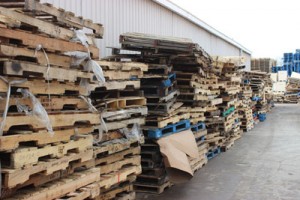 Recycled pallet wood is beginning to be a popular source of wood for projects these days and there are several companies like World Wide Box & Packaging Corp. that sell recycled pallets that have been “repaired” to work like new. This month, Steve took a tour of this company and shares with us some facts and insights into the real world of pallet manufacturing.
Recycled pallet wood is beginning to be a popular source of wood for projects these days and there are several companies like World Wide Box & Packaging Corp. that sell recycled pallets that have been “repaired” to work like new. This month, Steve took a tour of this company and shares with us some facts and insights into the real world of pallet manufacturing.

